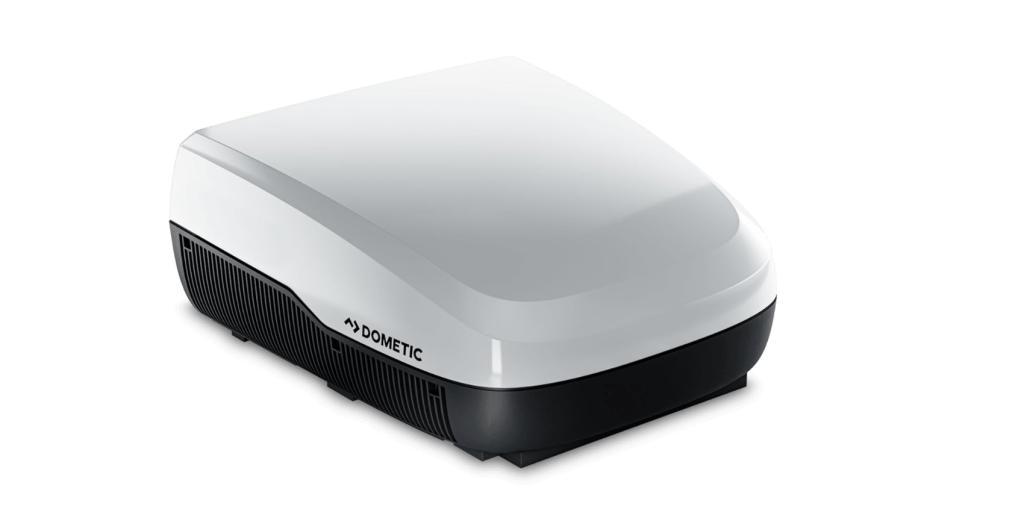I understand that maintaining your RV’s air conditioning system can seem daunting.
Let’s break it down to make it more approachable, focusing on how these systems function, how they differ from home AC units, and where and how they drain.
Understanding Your RV Air Conditioner
Your RV air conditioner operates on principles similar to those of a home unit but is designed to be more compact and energy-efficient.
These units use a refrigerant to absorb heat from inside your RV and release it outside. This process involves several key components: the compressor, condenser, evaporator, and fans. The compressor circulates the refrigerant, the evaporator cools the air, and the condenser expels the heat outside.
Unlike residential air conditioners, which are often part of a centralized system, RV AC units are self-contained and mounted on the roof. This design is essential for the mobile nature of RVs, ensuring that the unit is both lightweight and durable enough to handle the vibrations and movements of the road.

How RV Air Conditioners Are Different from Home Units
One significant difference between RV and home AC units is their method of draining condensation. In a home unit, condensation typically drains through a complex network of pipes into a drainage system.
RV units, however, are designed to be simpler and more direct in their approach due to the space constraints and the need for mobility.
Where and How Your RV Air Conditioner Drains
The drainage process for an RV air conditioner is relatively simple but crucial to understand. When the unit operates, it pulls warm air from the inside of your RV across the cold evaporator coils. This process cools the air and simultaneously causes condensation to form on the coils, much like how water droplets form on a cold glass on a hot day.
This condensation needs to go somewhere.
In an RV, the condensed water usually drains into a drip pan located beneath the evaporator coils. From the drip pan, the water is channeled to the roof through small drain holes or tubes. Gravity then takes over, allowing the water to run off the roof of your RV.
Here’s how to ensure your AC drains properly:
- Regular Maintenance: Periodically check the drip pan and drain holes for any blockages. Debris, such as leaves or dirt, can clog these pathways, causing water to back up and potentially leak into your RV.
- Level Your RV: Always ensure your RV is leveled correctly. An uneven RV can prevent the water from draining properly, leading to pooling and potential water damage.
- Inspect Seals and Gaskets: Make sure the seals around your AC unit are intact and not leaking. Water should be directed outside, not into your RV’s interior.

Practical Tips
I know firsthand that dealing with AC issues in your RV can be frustrating, especially during those hot summer trips. It’s crucial to stay on top of maintenance to avoid unexpected problems. Remember, a little proactive care can go a long way in keeping your travels comfortable and worry-free.
If you ever notice water dripping inside your RV or any unusual sounds from your AC unit, it’s essential to address these issues promptly. These signs often indicate a blockage or a problem with the drainage system.
Don’t hesitate to consult your RV’s manual or seek professional help if needed. Your peace of mind and comfort on the road are worth it.
And, for good measure, always make sure your interior air condition intake vents are free of dust buildup.
Stay cool out there!
Discover the Best Free Camping Across the USA
To be honest with you, we hate paying for camping. There are so many free campsites in America (with complete privacy).
You should give it a try!
As a matter of fact, these free campsites are yours. Every time you pay federal taxes, you’re contributing to these lands.
Become a FREE CAMPING INSIDER and join the 100,000 campers who love to score the best site!
We’ll send you the 50 Best Free Campsites in the USA (one per state). Access the list by submitting your email below: